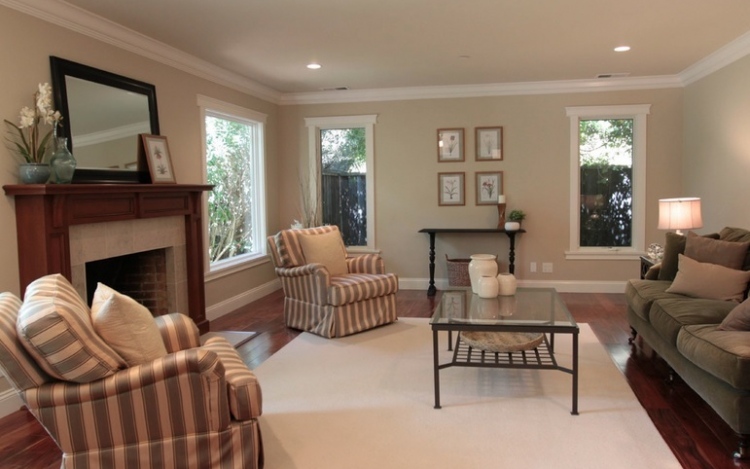Among all other home trims, crown molding is the king. It’s the decorative element that will make the transition from the wall to the ceiling smooth and elegant. This molding will bring the eye up making the room look higher and enhancing its appeal. But since not all rooms are the same, ceiling moldings differ too. Here is a quick overview of the king of trims to help you decide on yours.
What is Crown Molding?
The first crown molding ideas were born in ancient Greece. They were later adopted by the Romans and eventually developed to land in our days in the form of multiple profiles. A ceiling molding is nothing more than a trim usually made of plaster or wood to ornate the harsh corner where ceilings meet walls.

Due to their position, crown molding installation is not easy. It requires precise calculations since there is actually a triangle, which must be attached to the ceiling and wall, and finally fit in the corner between the two.
The Most Popular Crown Molding Designs
There are several crown molding designs to match the architectural needs of each room. The most distinctive design is the egg & dart crown molding, which was often used by the ancient Greeks. It can be adorned with beads or ropes. Other designs include the Milan, Colonial, and deep cove crown moldings. Some cornices have a symmetrical flower or leaf design with or without ropes and beads.
How to choose the Right Crown Moulding for the Room
Everything about this molding is important. Even a simple crown molding profile can alter the looks of a room. But since the height of the ceiling and the style of the room are both important factors when you are trying to choose such trims, you need to beware of details.

- The usual ceiling crown molding size ranges from 3” or 20”. What size you choose depends on how tall the room is. Sometimes, very low rooms won’t need a ceiling molding at all. Oversized trims will bring the ceiling down. Small moldings in large rooms will not make any visual effect. So it’s critical to choose based on room height to ensure harmony in space.
- In order to create the expected visual appeal, you should install crown molding that matches the style of your room. Sometimes, a classic profile would fit even in modern homes since it will break the simplicity of minimalism. But more often than not, it’s best to pair the style of ceiling molding with the rest of the trims in the room.
Actually, the combination of trim style will make a more charming architectural effect. Although the crown moulding shouldn’t be exactly the same style as the baseboard, it should be identical in terms of style and size.

- Pay attention to the color. Most crown moldings are white. But it will depend on your style choices. It will also depend whether or not there are wainscoting panels. You might want to paint the ceiling molding the same color with the floor-to-ceiling panel. Or, you might want to let it stand out by painting a different color than that of the ceiling and walls, especially if you use dark hues for such surfaces.
Crown Molding Materials
- Foam crown molding is a popular choice since is lightweight and can also come in flexible options needed in round-shaped rooms.
- Plaster is also a common choice. This is a rather heavy molding but also durable and might feature crispy details. Due to its heavy weight, it must be installed properly.
- Wood provides flexible crown molding options and is rather lightweight.
- Today you can also find trims made of MDF.

Crown Moulding Prices
There is not a fixed crown molding cost. The price depends on the molding’s design, material and size. Naturally, ornamental profiles cost more. Plaster costs more than foam. But it’s the combination of the profile-material-size options that would determine the final price.
Don’t Install Crown Molding Alone
Crown moulding installation is a difficult job. Done right and your room will look splendid. Done wrong and the results will be disastrous. Add to that the dangers of the heavy plaster and you have a good reason for turning to a pro to install the new molding. Don’t forget that each material is installed in a different way (with adhesives or nails) but the molding must fit perfectly in the angle and would be even harder to install it on curved walls. So, spare yourself the hassle and possibly the disappointment and hire a pro for the job.




